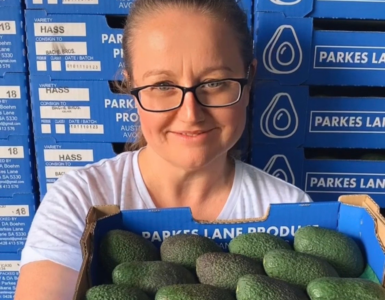Agriculture is not only on the farm, it’s all around us! From the fruit and vegetables in your fridge to the plants in your backyard, agricultural science is a part of our everyday lives.
Round up the kids off the computer and get them involved in some easy and inexpensive science experiments that will get them excited about agriculture!
Grow an avocado tree
Supplies:
– Avocado pit
– Toothpicks
– Glass
– Water
The experiment:
1. Carefully remove the pit from the avocado and gently wash it in warm water.
2. Determine the bottom of the pit: the bottom is wider and has a bump on it, which is where the new root will form.
3. Use toothpicks to skewer the top of the avocado pit so that it can balance evenly on the rim of the glass and the bottom of the pit is submerged in water.
(If desired, you can peel the pit for faster germination).
4. Set the glass on a sunny windowsill and change the water every few days.
5. What will happen?
The seed will begin to sprout and in 3-4 weeks it will be ready to be planted in soil.

Egg-speriment
Supplies:
– 2 raw eggs
– Vinegar
– Water
– Glasses
The experiment:
1. Place one egg in a glass filled with water (the control) and another in a glass filled with vinegar.
What happens in the glass filled with vinegar compared to the glass filled with water?
Bubbles should form all over the egg in the glass filled with vinegar causing the egg to rise to the surface.
2. Leave the eggs for a few hours or overnight.
What is happening to the egg shell?
Almost all of the shell will be eaten away and the top of the vinegar should be foamy.
3. Carefully rinse the eggs under a gentle stream of water. If there is still egg shell left, put the egg back in the glass with fresh vinegar and let the egg sit for a few more hours or another night until the shell is completely gone.
4. What do you see and feel?
The egg should be rubbery, bouncy, translucent and bigger in size
5. Why did this happen?
The vinegar broke down the egg calcium carbonate shell, producing the tiny carbon dioxide gas bubbles. The egg got bigger through a process called osmosis (the movement of liquid across a membrane) because the membrane is semi-permeable.
Membranes like to be balanced, so particles of vinegar moved inside the egg to make the level of vinegar inside and outside of the egg balanced, which is why the egg got bigger.

Rainbow Flowers
Supplies:
– Vase/jar/glass/bottle
– Any white flower (two per jar)
– Food dye
The experiment:
1. Place the flowers with trimmed stalks in a jar, vase or glass filled with water.
2. Add a six drops of food dye into the water and leave for a few hours or leave overnight.
3. What happens?
The flower petals change colour.
4. Extra challenge: carefully split the stem in half to the mid-point of the stem. Place one half of the stem in one colour water and the other in a different colour. After a few hours the petals will be two different colours.
5. Why does it happen?
The reason this happens is because of transpiration, which is when the flowers “drink up” the water. The water molecules travel up the stem (or the xylem) like a vacuum. The water (which is now coloured) evaporates through the leaves and petals making them hydrated and in this case change colours as well.







































Add comment